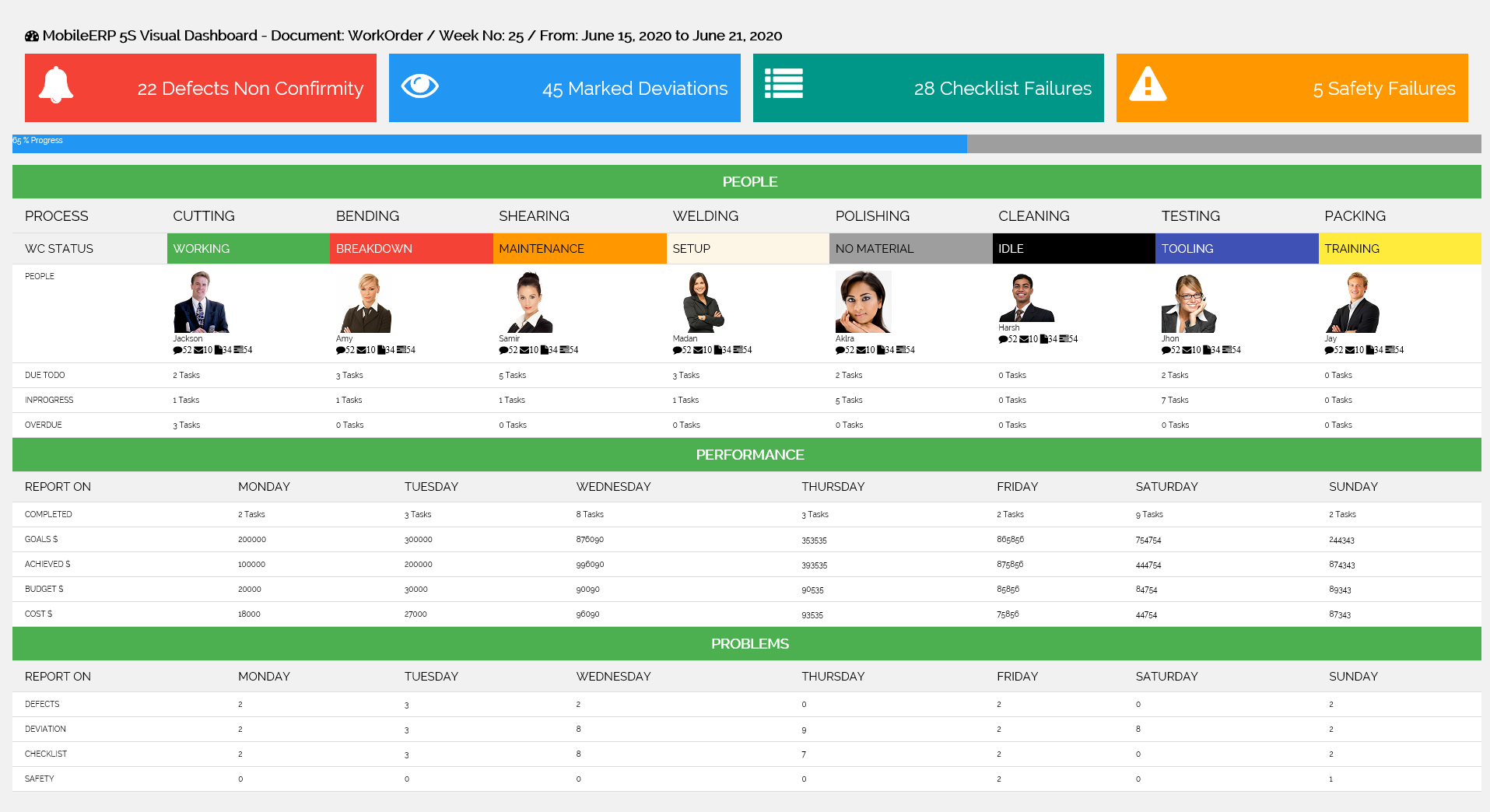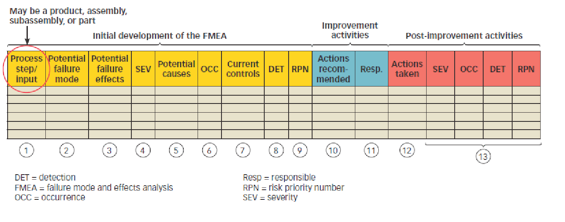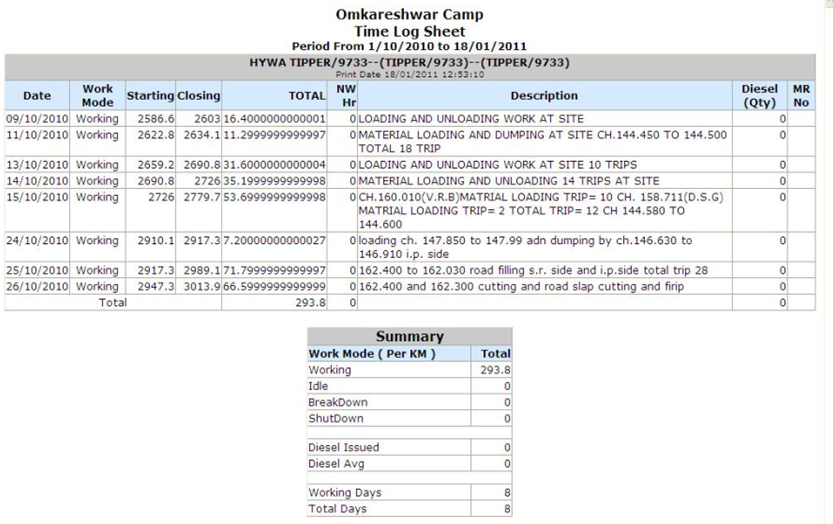
There are different types of maintenance that organizations use to increase the uptime of their assets and utility of their facilities. Based on an organization’s budget, amount of resources, level of combined experience, and maintenance goals, one or more maintenance types are used.
For instance, a manufacturing plant that has a team dedicated to maintenance technology and is owned by a billion dollar company will use predictive maintenance. A small facility that’s owned by a private company and is just starting to bring maintenance in-house will use various forms of reactive maintenance. However, as the company experiences the high costs associated with reactivity, they will start experimenting with proactive types of maintenance
It’s rare for an organization to use a single type of maintenance. Even a state of the art manufacturing plant that has predictive maintenance technology will use less advanced types of maintenance. This is because not all assets are created equal. While a critical asset that costs $100,000 will have conditional monitoring sensors attached to it for predictive maintenance, a non-critical asset that costs $5,000 will receive preventive or breakdown maintenance.
To understand which types of maintenance to implement, you must know which types you’re currently using and what your maintenance goals are. You must also have a grasp of your available budget and resources. Even if you’re moving from having no maintenance strategy to a reactive strategy, maintenance workers and maintenance software are needed for successful implementation.
Proactive types
Preventive MaintenancePredictive Maintenance
Condition based Maintenance
Scheduled Maintenance
Planned Maintenance
Routine Maintenance
Reactive types
Corrective MaintenanceEmergency Maintenance
Breakdown Maintenance
Accident based Maintenance
Risk based Maintenance
Other types
Defferred typesReliability Centered
Energy Consumption
Total Productive
OEE Based
FMEA Based
Logbook Based
CMMB Benefits
Productivity rise 50%Breakdowns falls 99%
Defect Rate falls 90%
Cust Complaints falls 75%
Maintenance Cost falls 30%
WIP falls 50%
Energy Consumption falls 30%
Accidents becomes Zero
Pollution becomes Zero
Suggestions rise 10 Fold
TEAM
Machines
Stores
Technicians
Repair Shops
Facility Desk
Asset Owners
TARGETS
Resolve maintenance issues quickly
Predict, detect, and resolve quickly
Send technicians where needed.
Enhances asset management,
Minimise failures, repairs and unuse
Develop eltie team of experts
GOALS
Improve Inuse
Improve utilization
Improve life of machine
Empowering Technicians
Reduce service costs
Improve Workforce safety
ACTIONS
Maintenance Plan
Create WorkOrder
Allot Technician
Issue Material
Create RepairBill
Collect Payments
Machine Tracking
1. Collaborative EAM
2. Centralized repository
3. Auto Asset Tracking
Performance Measure
1. Machine Usability Management
2. Risk and criticality assessment
3. Failure Mode Effects Analysis
Visual Board
1. 360-degree view
2. Advance analytics
3. WorkOrder management
Mobile Simulations
1. Machine health prediction
2. IOT/QR/NFC Integration
3. Mobile Management
What is Maintenance Management Software?
Maintenance management software is a program intended to assist with maintenance repairs, workflows, and costs. Maintenance management software, often referred to as a computerized maintenance management system (or CMMS), helps businesses to be proactive rather than reactive with how it approaches maintenance.

What are different types of Maintenance?
A. Proactive types:
1. Preventive Maintenance - Periodic Maintenance - PMs
Preventive maintenance is the most popular type of proactive maintenance. To start conducting preventive maintenance tasks (PMs), an organization does not need to purchase new technology if it already has a CMMS. This is not the case with predictive maintenance which requires condition monitoring sensors and new software integrations. However, with preventive maintenance, the organization runs the risk of over-scheduling maintenance tasks because tasks are scheduled based on time rather than actual conditions. That said, preventive maintenance achieves 12% to 18% cost savings over reactive maintenance.

2. Predictive Maintenance - PdM
Predictive maintenance (PdM) is work that is scheduled in the future based on analysis of sensor measurements and formulas.
How does predictive maintenance work? Predictive maintenance evaluates the condition of equipment by performing periodic or continuous (online) equipment condition monitoring. Most predictive maintenance is performed while equipment is operating normally to minimize disruption of everyday operations.
Predictive maintenance (PdM) is what savvy maintenance teams aspire to have or are already implementing. The major barrier to PdM is the time it takes to implement rather than the cost of the technology itself. For instance, a vibration sensor that can identify imbalance, misalignment, and resonance issues only costs around $200. But the time it takes to install, integrate with other maintenance software, and adopt a culture around is not time that all organizations are willing to allocate. For those that do allocate the time, PdM provides an 8% to 12% cost savings over preventive maintenance.
3. Condition based Maintenance - CBE
Condition-based maintenance (CbM) is work that is performed at the exact moment when measured parameters reach unacceptable levels.
Condition-based maintenance (CBM) is at the core of predictive maintenance but, on its own, does not rely on technology to determine the condition of an asset like PdM does. For instance, a manager may instruct an operator to monitor the condition of an asset and submit a work request when a specific condition is met. This approach may, or may not be, as reliable as predictive maintenance. An organization that has highly-trained operators may spot hazardous conditions better than an organization using PdM technology that doesn’t know what to look for.
4. Scheduled Maintenance - SMs
Scheduled maintenance includes work that is scheduled on a calendar for completion. The most common type of scheduled maintenance is calendar-based preventive maintenance tasks. These are scheduled well in advance of completion. For instance, an asset with a monthly PM has twelve instances of scheduled maintenance in a given year. However, just because maintenance is scheduled does not mean it’s planned. Planned maintenance implies that a maintenance planner or other type of maintenance worker has fully planned for parts, materials, skills, and other resources to be available during the scheduled time window.
5. Planned Maintenance - PlM
Planned maintenance is work that’s prepared for in advance of it taking place. It is also the most popular key performance indicator (KPI) to track. A high planned maintenance percentage indicates that a maintenance team will have resources available to complete work for the time/day the work is scheduled for. Having a high planned maintenance percentage also helps boost other maintenance KPIs like schedule compliance. More planned maintenance means more successful completion of scheduled maintenance.
6. Routine Maintenance - RMs
Routine maintenance is a form of time-based maintenance and preventive maintenance, though some organizations differentiate between routine maintenance and preventive maintenance. They use the latter for smaller tasks (i.e. cleaning) performed at higher frequencies (hourly, daily) and the former for larger tasks (i.e. inspections) performed at lower frequencies (weekly, monthly, annually). Additionally, routine maintenance is performed by operators, janitors, and other staff member while preventive maintenance is performed by technicians. Non-routine maintenance includes maintenance that is performed reactively or only when needed based on an asset’s conditions.
B. Reactive types
1. Corrective Maintenance - CMs
Corrective Maintenance - where equipment is repaired or replaced after wear, malfunction or break down.
Corrective maintenance is inherently part of emergency maintenance because, when there is an emergency, something needs corrected or fixed. In this way, corrective maintenance is mostly reactive. However, it can also be proactive. If an asset with a condition monitoring sensor detects an issue, a work order is created and a technician is sent to correct it. Similarly, preventive maintenance is considered corrective maintenance if there is an issue to fix. This is rare though as PMs are often conducted when an asset is in good working order.

2. Emergency Maintenance - EMs
Emergency maintenance occurs when an asset requires immediate attention in order to keep a facility operational or safe. This is the most reactive and intrusive type of maintenance as it pulls technicians away from other jobs and lowers schedule compliance. In extreme circumstances, emergency maintenance can set an organization back days depending on the scope of the repair, available parts, and the asset’s level of importance. To reduce the amount of emergency maintenance that is both unplanned and unscheduled, organizations adopt various forms of proactive maintenance.

3. Breakdown Maintenance - BMs

4. Accident based Maintenance - AcM

5. Risk based Maintenance - RBM
Risk-based maintenance (RBM) prioritizes maintenance resources toward assets that carry the most risk if they were to fail. It is a methodology for determining the most economical use of maintenance resources. This is done so that the maintenance effort across a facility is optimized to minimize any risk of a failure.
C. Other types
1. Defferred types - DTs
Deferred maintenance includes repairs and inspections that are put into a backlog due to limited budget and resources. While deferring maintenance saves money up front, the costs of not performing important maintenance compounds at 7% annually. Rising costs come from fines resulting from missed inspections and unscheduled downtime that brings production to a standstill. By far, deferred maintenance and emergency maintenance are the least desired types of maintenance.
2. Reliability Centered Maintenance - RCM
Reliability centred maintenance (RCM) is a corporate-level maintenance strategy that is implemented to optimize the maintenance program of a company or facility. The final result of an RCM program is the implementation of a specific maintenance strategy on each of the assets of the facility.
MEA functions are most often written at a higher level and do not address performance standards. RCM failure modes are written at a more detailed level, addressing the part, problem and specific cause of failure (fuel pump motor bearing > seized > due to lack of lubrication).
3. Energy Consumption based Maintenance - ECM

4. Total Productive Maintenance - TPM
TPM helps to achieve Zero “BAD” : Zero Breakdown , Zero Accident , Zero Defects
• Breakdown needs to be measured not in 3 digits but in single digit - ultimately to zero.
• Accidents needs to be measured by “no. of dangerous working conditions” “not by no. of accidents occurred (near miss count).
• Defects needs to be measured by ppm not as a percentage.
• Hence TPM must be driven by top person and must come as a way of life in your company.
Total productive maintenance (TPM) is the broadest type of maintenance that targets more than the assets that need maintained. It also aims to improve employee satisfaction and overall morale in the workplace, specifically in manufacturing plants. TPM does this by increasing overall equipment effectiveness (OEE) and the amount of planned maintenance. More planned work means more workers have the resources they need to do their job, which means higher levels of satisfaction. TPM also leverages machine operators to participate in maintenance and take ownership of their equipment.
5. OEE Based - Overall Equipment Effectiveness
OEE (Overall Equipment Effectiveness) is the gold standard for measuring manufacturing productivity. ... In the language of OEE that means 100% Quality (only Good Parts), 100% Performance (as fast as possible), and 100% Availability (no Stop Time). Measuring OEE is a manufacturing best practice.

6. FMEA Based - Failure Mode Effect Analysis based
Begun in the 1940s by the U.S. military, failure modes and effects analysis (FMEA) is a step-by-step approach for identifying all possible failures in a design, a manufacturing or assembly process, or a product or service. ... "Failure modes" means the ways, or modes, in which something might fail.

7. Machine LogBook based Maintenance
Every machine shall carry one Daily Log Slip Book with it. It is filled to know usage of machine. After certain usage preventive maintenance has to be done.
Every day a log slip will be filled and deposited in the store even if there was no work and nothing to be filled.
Diesel and Job Card for repairing/maintenance shall be supplied only after making proper entries in the log slip.
The Stores will enter the each slip in the Machinery Log Book maintained at the stores.
Machinery Log Book is to be maintained on the basis of Machine Log Slip for Machineries.
A separate Log Book shall be maintained for each machine. The stores shall be responsible for maintaining such Log Books.
When machinery is shifted from one site to another site, the Log Book for that machinery should be shifted along with the respective machinery.

How to Choose a Maintenance Strategy?
A process to develop your maintenance strategy was recommended by A.K. Gupta in his book, Reliability, Maintenance and Safety Engineering. Gupta makes the recommendation to establish your plan based upon your team’s goals and available resources.
He recommends that program designers answer these questions:
Critical assets: What are the most important items or critical assets?
Legal requirements: What legal requirements need to be considered?
Work planning: When can work be performed to avoid production loss?
Frequency: At what frequency should surveys, inspections, work, and tests be performed?
Money: Where does the money come from?. Labor Cost Per Asset Task * Number of Assets = Maintenance Labor Cost per Strategy in Dollars and Hours
Team: A major component of developing a plan involves building a team who has a stake in the plan’s success. It is also essential in creating a partnership with groups who can provide the resources to help the program be successful.

Computerized maintenance management software enables the following 10 advantages:
1. Plan and schedule preventative maintenance.
Computerized maintenance management software automates the scheduling of inspections and maintenance, preventing the occurrence of maintenance problems and expensive repairs. Switching from reactive to proactive maintenance also extends the life of equipment while reducing the overall operating costs of the maintenance function.
2. Manage work orders efficiently.
Software for maintenance and facilities management improves workflow and efficiency by allowing you to schedule, assign, and close work orders quickly and easily. CMMS software gives you the ability to configure work order screens with the desired fields, automatically tracks all work orders in the system, and captures the history associated with every piece of equipment.
3. Manage spare parts inventory.
When a maintenance department is disorganized, it can be difficult for maintenance managers to find the parts they need, when they need them. A CMMS system allows maintenance managers to track assets that need to be maintained and set up the automatic reordering of parts, so they have the right spare parts on hand and can perform repairs quickly. A CMMS also tells you exactly where the parts you need are stored, so you don’t waste any time searching through storerooms.
4. Eliminate paperwork.
Using software for maintenance and facilities management eliminates the need for paperwork and clipboards because the software can be set up to capture information automatically. Furthermore, maintenance personnel can view all information related to work orders on their computers or mobile devices. Therefore, maintenance technicians don’t have to search through folders and filing cabinets to find the information they need.
5. Enhance productivity.
Mobile CMMS can be used on smartphones, enabling maintenance technicians to access real-time information, check inventory, and initiate work orders without returning to the office. This reduces their journey time. Maintenance software also provides maintenance technicians with details about the procedures, parts, and tools necessary to perform a job, so they can work without delay or interruption.
6. Reduce downtime and repair costs.
Downtime is costly both in terms of revenue loss and damage to an organization’s brand and reputation. When you focus on planned, preventative maintenance, equipment downtime is minimized. Because a CMMS system enables you to regularly maintain structures and assets, they are less prone to breaking down, which means that repair costs are also reduced.
7. Increase safety.
Computerized maintenance management software aids organizations in regularly checking and maintaining equipment and meeting safety standards to prevent malfunction and critical failures. This minimizes the loss of work time due to accidents and makes your equipment safer both for operators and the environment.
8. Keep a finger on the pulse of your organization.
Increase your understanding of your assets and organization by using the CMMS dashboard feature in your CMMS to monitor key performance indicators (KPIs), look at the big picture, and create reports for decision makers. By using a CMMS to analyze historical data and trends, maintenance managers can identify problems areas, like rising costs, low productivity, or constant repairs.
9. Ensure compliance with regulatory standards.
Maintenance and facilities management systems must often comply with national and international regulatory standards. All maintenance managers face periodic audits or random inspections by regulatory agencies. Maintenance software allows you to demonstrate regulatory compliance and reduce the amount of preparation and paperwork that’s required for an audit. Maintenance managers can simply generate reports detailing the maintenance work performed on vital machinery. This makes compliance easily traceable and reduces the risk of noncompliance penalties.
10. Reduce overtime.
Computerized maintenance management software can cut overtime significantly by reducing the need for emergency maintenance and repairs. By scheduling maintenance, maintenance staff can work more efficiently and effectively.
The cost savings that organizations achieve with the implementation of maintenance software can be staggering, but it’s critical to choose a CMMS with the right functionality as well as work with the right partner to maximize your return on investment (ROI). An experienced vendor can provide you with the support you need today and as your maintenance operation evolves.